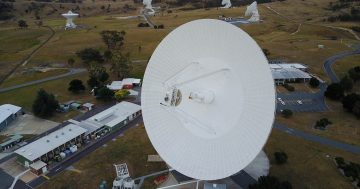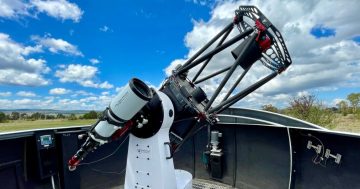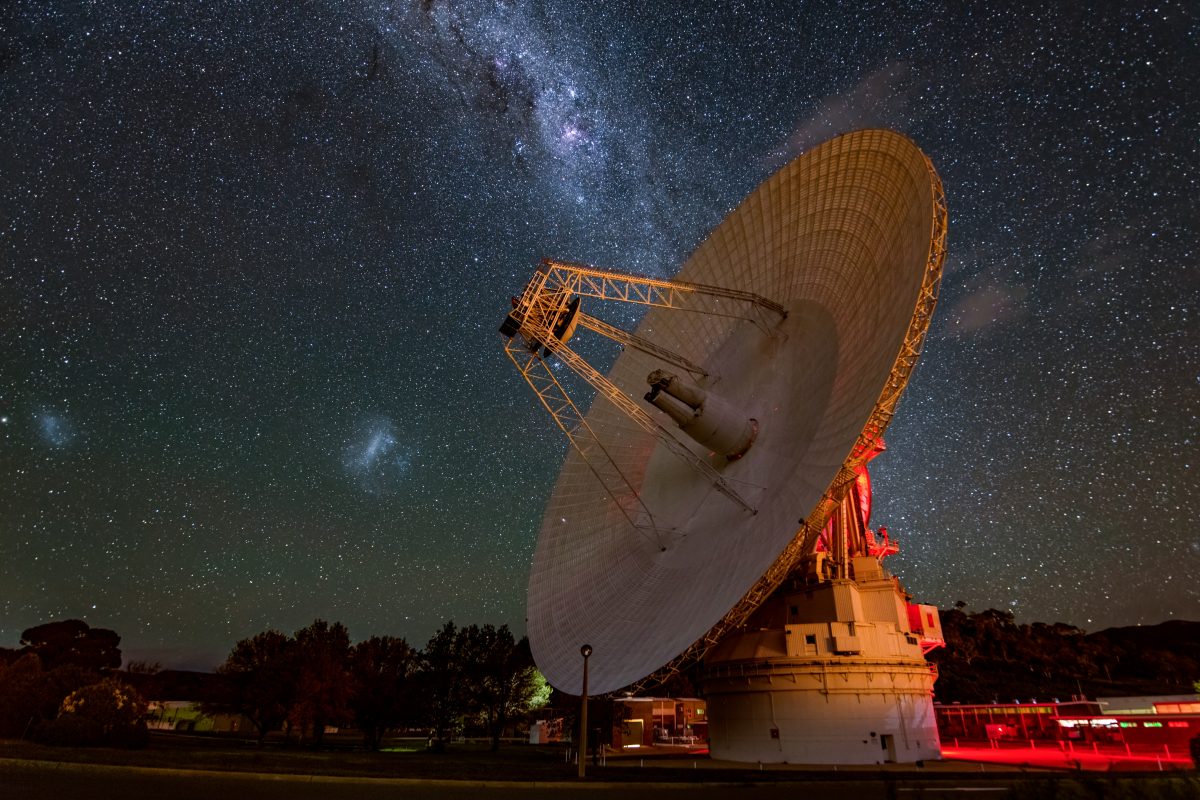
The Canberra Deep Space Communication Complex is playing a big role in NASA’s Perseverance rover mission to Mars. Photo: Alex Cherney / CSIRO.
The largest steerable radio antenna in the Southern Hemisphere turned 50 this week.
The Deep Space Station 43 is by far the biggest of the dishes at the Canberra Deep Space Communication Complex (CDSCC) near Tidbinbilla, measuring 73 metres high and 70 metres wide, and weighing seven million kilograms.
It was opened by then Prime Minister Gough Whitlam on 13 April, 1973, to usher in a new age of space exploration for Australia and the world.
“The … antenna will be known as ‘Ballima’, Aboriginal for ‘very far away’, which we believe to be symbolic of both its location in this country and its role in deep space tracking,” Deputy Prime Minister Lance Barnard said at the time.
“This antenna has entailed a great deal of hard work, planning and skill.”
The CDSCC is the result of a partnership between the Commonwealth Scientific and Industrial Research Organisation (CSIRO) and National Aeronautical and Space Agency (NASA).
It’s one of three Deep Space Network stations around the world, tasked with providing continuous, two-way radio contact with spacecraft exploring our Solar System and beyond. The others are near Madrid in Spain and in Goldstone, California.
After deciding against Woomera in South Australia, CSIRO and NASA settled on a site in the Tidbinbilla Valley – a handy 35 kilometres from a growing city but remote enough for radio interference to not be an issue.
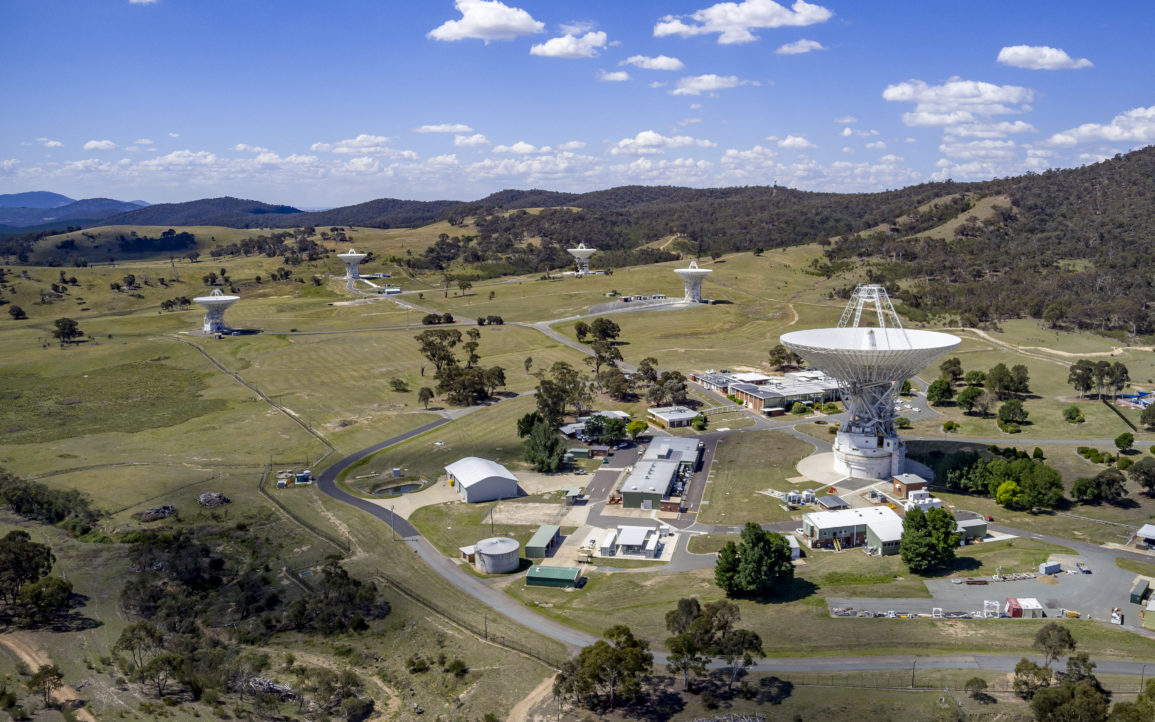
The Canberra Deep Space Communication Complex. Photo: CSIRO.
Construction began in June 1963, with a 26-metre antenna called Deep Space Station 42 as the centrepiece of the complex. Operations commenced that December.
Two years later, a new spaceflight wing was added, designed so the Canberra crew could assist with relaying messages from NASA’s Apollo moon missions to Mission Control in Houston.
By the late 1960s, spacecraft were travelling further and sending back more data so work started on a new antenna, Deep Space Station 43.
Hello, space? It’s Deep Space Station 43 calling. 📞
For the past 50 years, Deep Space Station 43 at @CanberraDSN has supported two-way communications with dozens of robotic spacecraft.
Explore the antenna’s greatest achievements: https://t.co/CBHIo1vZEZ pic.twitter.com/zECPAFg7F7
— CSIRO (@CSIRO) April 13, 2023
It took nearly four years to complete, but the pay-off wasn’t long in coming. ‘Ballima’ helped support communications and tracking for the final mission of NASA’s Apollo lunar program, Apollo 17, several months before Whitlam officially cut the ribbon.
During the 1980s, the Voyager 1 and 2 spacecraft reached the ‘gas giants’ of Jupiter, Saturn, Uranus and Neptune, giving off weaker and weaker signals as it drifted further from Earth. But with a dish six times as sensitive as the original 26-metre one, there was little problem receiving the data and images billions of kilometres away in Canberra.
But it could always be bigger. And in 1987, Ballima grew to 70 metres in diameter, comfortably making it the largest steerable antenna on this half of the globe, and the only one in the world still able to communicate with the Voyagers as they leave the Solar System behind.
It also played a role in the landing of NASA’s exploration rovers on Mars, including most recently in 2012, when the US-based Mission Control – waiting with bated breath – heard about the successful landing from here first.
Now as NASA prepares to return to the Moon with the Artemis missions, it will help there too.
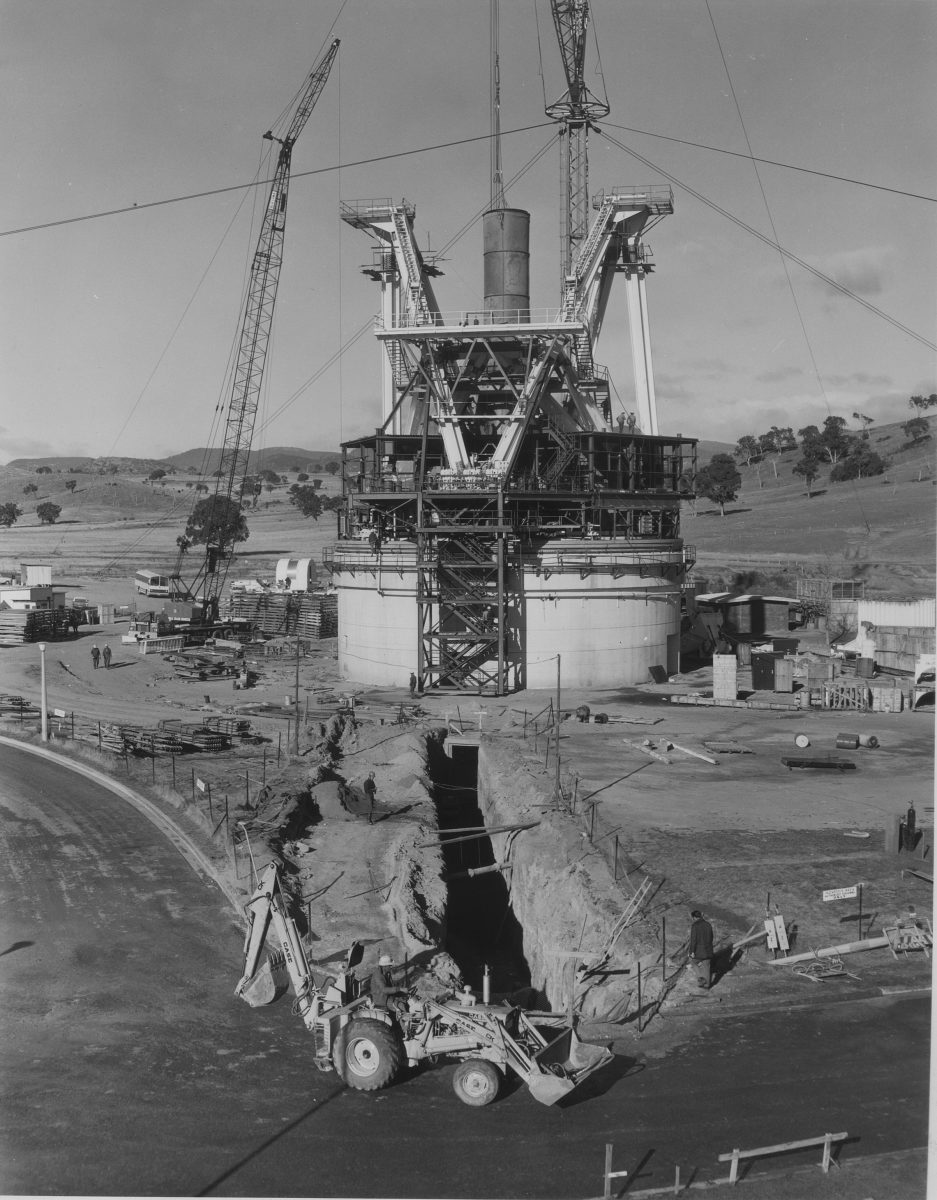
Deep Space Station 43 under construction. Photo: Canberra DSN.
And there’s always the opportunity for Australia’s radio astronomers to use it in their spare time to observe things like the supermassive black hole at the centre of our Milky Way Galaxy.
“Congratulations on your 50th anniversary of operations,” Space Australia founder Rami Mandow tweeted to CDSCC on 13 April, 2023.
“The largest, steerable radio antenna in the southern hemisphere, and still going strong, keeping us connected to robots, spacecraft and humans beyond Earth.”












